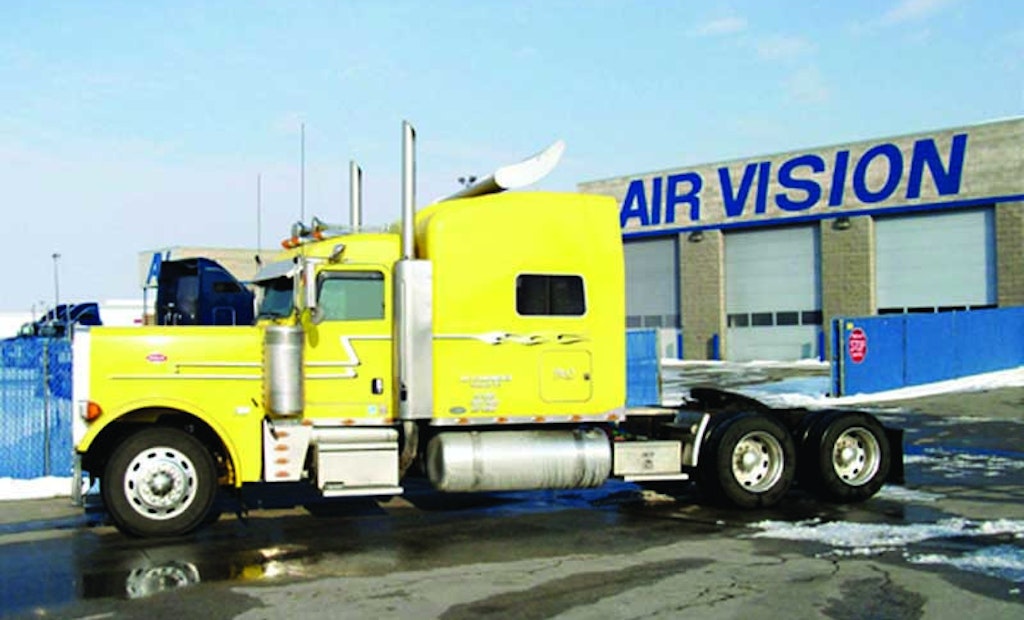There’s nothing quite so impressive to customers as a service vehicle flashing an array of polished chrome, stainless steel and aluminum. However, chrome is a two-edged sword — there’s nothing so humbling as pulling up to a job site with shiny parts covered in mud, rust, dust and grease. Installers can do their part to ensure that chrome continues to shine, while professional detailers offer tips to maintain metallic luster.
Many contractors are attracted to chrome accessories to add to the good looks of vehicles that promote their brand, such as service vans, vacuum trucks and pickups. Luckily, this concern doesn’t extend to digging equipment including excavators and skid-steers.
“You want to have the chrome on your service trucks that customers see first,” says Penny Dunlap, co-owner of Dunlap Septic & Excavation Service of Medford, Oregon.
Brian Wakefield, owner of B & J Wakefield Services Inc. in Waxahachie, Texas, agrees. “We want the chrome on our pumper trucks to shine brightly, because the appearance of these vehicles is a big factor for customers,” he notes.
Each of the materials that make up the chrome family requires care and maintenance to ensure longevity and consistent shine. Weighing in on professional chrome cleaning is Cory Jones, who has operated truck-detailing business Air Vision of West Valley City, Utah, for the past 30 years.
Chrome
While the term popularly includes any kind of shiny metal, it specifically refers to a thin layer of chromium electroplated onto a surface made of steel, aluminum, nickel or plastic.
Chrome falls into two categories:
- Hard chrome, industrial chrome or engineered chrome, which offers a thicker chromium coating, reduced friction, and resistance to abrasion and oxidation.
- Decorative chrome, which is thinner but possesses the same toughness. It’s the chrome used on visible parts of trucks, such as pipes, trim and bumpers.
“Chrome is the hardest of a truck’s shiny surfaces, so when it’s new, it’s pretty difficult to mess up — but that doesn’t make it resistant to abuse,” says Jones. “One of the big mistakes people make is to use harsh or abrasive cleaners. They’ll go at it with Ajax or other abrasives that will shorten the life of the chrome.”
Chrome’s biggest enemies are acids, which stain the material, and heat, which can permanently discolor it.
“If drivers have their motors turned all the way up, their straight stacks will turn purple, yellow and bronze,” says Jones. “Once the surface is burned, its appearance is toast. The discoloration doesn’t take away from the smooth surface and we can still shine it up, but it will never look the same again.”
Jones uses a rubbing compound and cloth on chrome, then waxes the surface to protect it from dirt and moisture.
However, successive use and cleaning will slowly wear down the surface of the chrome until the material underneath is exposed. Even a pinhole on chrome-surfaced steel will bring rust to the surface.
“You can use a light steel wool to remove that rust, but each time you go that route, you’ll wear the chrome down further, and the chances of rust coming back bigger increases,” says Jones. “Wax will protect the surface, but eventually you will have to replace that part or re-chrome it.”
Stainless steel
While steel rusts under the influence of air and moisture, stainless steel doesn’t. That’s because it contains a minimum of 10.5 percent chromium by mass. The reason — stainless forms a film of chromium oxide that prevents further oxidation.
Stainless steel is high-speed factory polished to provide its shine. However, the metal isn’t invulnerable, as it can stain under the influence of excess salt. Keeping surfaces free of road salt is probably the best way for equipment owners to ensure the integrity of the metal.
“Stainless steel is way softer than chrome, but because these parts are solid stainless through and through, it’s harder to mess up than chrome,” says Jones. “However, because the material is softer, it’s much easier to scratch deeply. Equipment owners can clean up any tough stains with window cleaner and (00 grade steel wool).”
At the shop, Jones gets stainless steel to shine by using a high-speed buffer fitted with a wool pad.
Aluminum
“Aluminum is durable and doesn’t rust, but it’s porous and that means it latches onto stains from road salts, dirt and hard water,” says Jones.
Air Vision typically uses a hydrochloric acid solution to clean impurities from the surface of aluminum. However, while acid cleans aluminum, it also makes it duller.
“Polishing will restore its shine, although some people mistake polishing for much lighter buffing,” he says. “Polishing is also known as cutting, because you are actually ripping off the outer layer of aluminum.”
Jones cleans aluminum using a high-speed grinder and the side – not front – of a canvas wheel. He uses jewelers compound to provide abrasion, ranging from red (the finest), through white, green and brown (the most abrasive), depending on the condition of the surface.
“You need torque and horsepower at 8 to 10,000 rpms because you have to put a lot of pressure on the wheel while you’re cutting,” he says. “Using paste, it’s important to be thorough and to remove all of the paste before you’re done, because paste left on the surface will turn black.”
Large surfaces
“Whether chrome, aluminum or stainless steel, the hardest part of doing a good job is to remain consistent,” says Jones. “I liken it to painting — if you stop painting, you get a dry line that will be visible in the final job. You have to keep the wet line active and blend the lines together for a consistent surface shine.”
Thankfully, tanks have natural breaks, such as vertical weld lines, that provide a convenient starting and stopping point for polishing.
“We like to start at the top of the tank sections, then move back and forth as we gradually move underneath the tank,” says Jones. “That keeps the shine consistent.”








